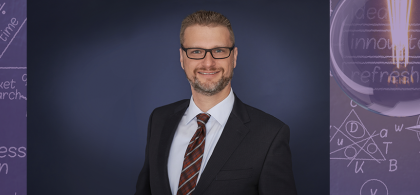
The bioeconomy: the promise of a sustainable future or a delicate balancing act?
The bioeconomy leverages renewable biological resources rather than fossil fuels to produce goods and services. On the surface at least it’s a more ecological approach. But a study co-authored by two NEOMA researchers, Stéphane Lhuillery and Nicolas Befort, reveals an altogether different reality: the bioeconomy is an innovation-lite model that until now has been geared towards largely unsustainable technology.
The bioeconomy is often touted as a solution to the major challenges facing the planet, such as climate change, food security and the depletion of natural resources. It is an economic model that utilises renewable biological resources to produce goods and services, providing a viable alternative to fossil fuels.
However, the very definition of the term bioeconomy is hazy: in fact, its meaning varies depending on the institution, country and outlook. This range of definitions makes it harder to identify the sectors and technologies associated with the bioeconomy. It also limits its visibility, especially among decision-makers. In particular, the non-existence of patent categories dedicated to the bioeconomy means it is impossible to measure its impact accurately, making it difficult to weigh up its contribution to global innovation.
Against this backdrop, the recent study by the NEOMA researchers aimed to shed light on the current state of affairs, addressing two key questions: What innovations and technologies genuinely contribute to the bioeconomy? And, most importantly, are they really sustainable?
Different visions of the bioeconomy
The researchers identify two main visions of the bioeconomy. The first is biotechnology-driven, focusing on the application of technology to living organisms. This approach, which is promoted by the Organisation for Economic Co-operation and Development (OECD), relies on technological advances such as using micro-organisms to produce bioplastics. It also highlights genetic techniques and how they are applied in industrial processes, such as using genetically-modified bacteria to produce insulin.
Broader in scope, the second conception of the bioeconomy centres on transforming biomass derived from sources such as agriculture, forest wood or waste. This is then converted into biofuels, biodegradable materials and similar products. Biorefining plants leverage pioneering technologies to exploit agricultural waste for the production of bioethanol or use algae to generate alternative types of fuel. This model, which is endorsed by the European Union, illustrates the wide-ranging processes associated with the bioeconomy, which extend beyond biotechnologies. The researchers show that this wider vision aligns more closely with the reality of today’s bioeconomy.
Regardless of the specific vision, however, an analysis of all the patents filed between 1983 and 2015 reveals two key points: first, biotechnology and biomass transformation are not hugely cutting-edge fields; and secondly, these activities belong to diverse sectors upstream of the agriculture and agri-food industries often highlighted in previous analyses. Of even more concern is that the dearth of green technologies utilised in the bioeconomy raises doubts about the virtuous nature of the model.
Sustainability challenges facing the bioeconomy
One of the vital issues to emerge from the study is the difficulty the bioeconomy faces in adhering to strict sustainability criteria. A high proportion of the innovations linked to this model fall short of the environmental goals set internationally. To take one example: the innovations of fewer than half of the state-of-the-art biorefineries examined in the study would contribute to green targets.
The result is that, despite the bioeconomy relying on renewable resources, there is no guarantee that its industrial processes will use biomass virtuously or reduce its environmental impact. Quite the opposite, in fact: in its quest to break away from fossil fuels, the bioeconomy runs the risk of replicating the mistakes of the very model it purports to replace. The over-exploitation of biological resources, such as excessive deforestation for biofuel production, is a stark illustration of this.
In this context, the researchers underline the importance of showcasing and supporting innovations that are genuinely green, and not just the bioeconomy as a whole. They also advocate for greater collaboration between the public and private sectors to promote environmentally-friendly technologies and accelerate their rollout.
A transition with a long way to go
While the bioeconomy holds undeniable promise, it is still failing to meet its sustainability goals. To steer the transition, the researchers underline the need for better-targeted investment, robust assessment tools and enhanced coordination of government policy. Unlocking the potential of the bioeconomy means shifting from a sector-focused vision to a vision dedicated to sustainable technologies.
Read more
Stéphane Lhuillery, Nicolas Befort, Samih Atmane, Biotechnology or bioeconomy: Six of one and half a dozen of the other?, Ecological Economics, Volume 229, 2025, 108470, ISSN 0921-8009, https://doi.org/10.1016/j.ecolecon.2024.108470



